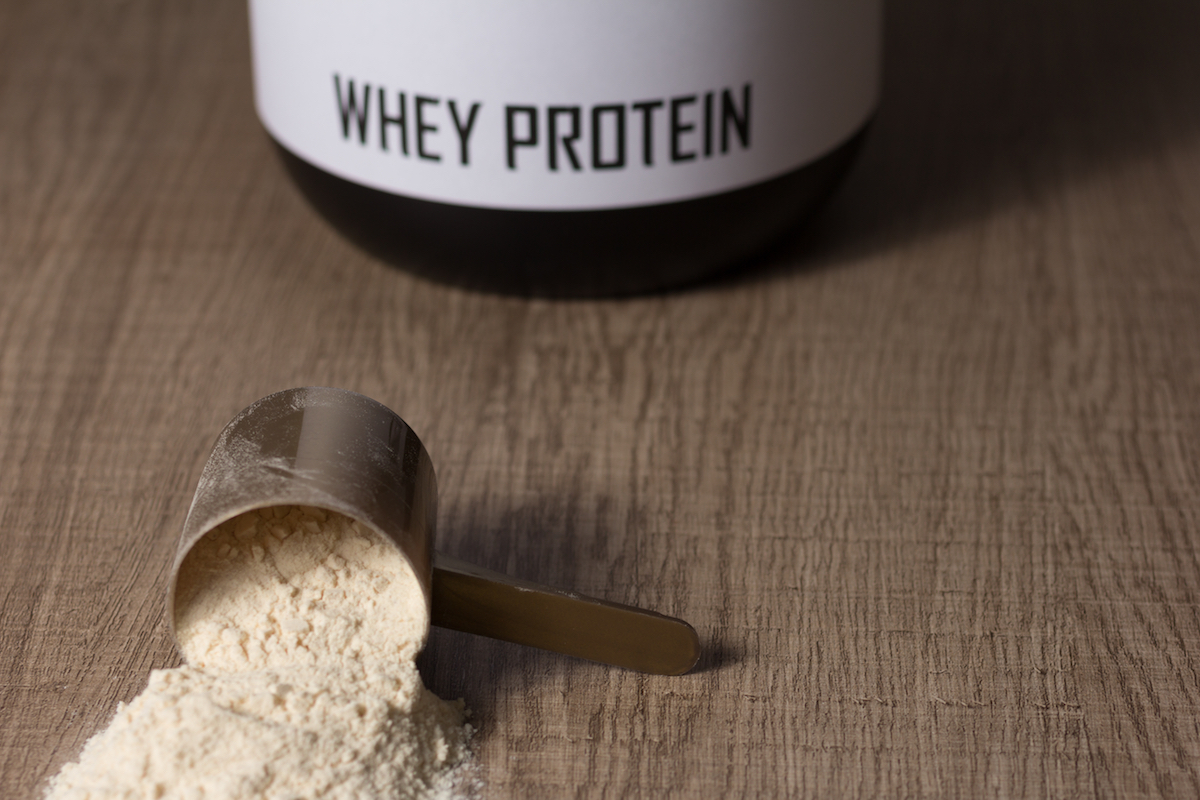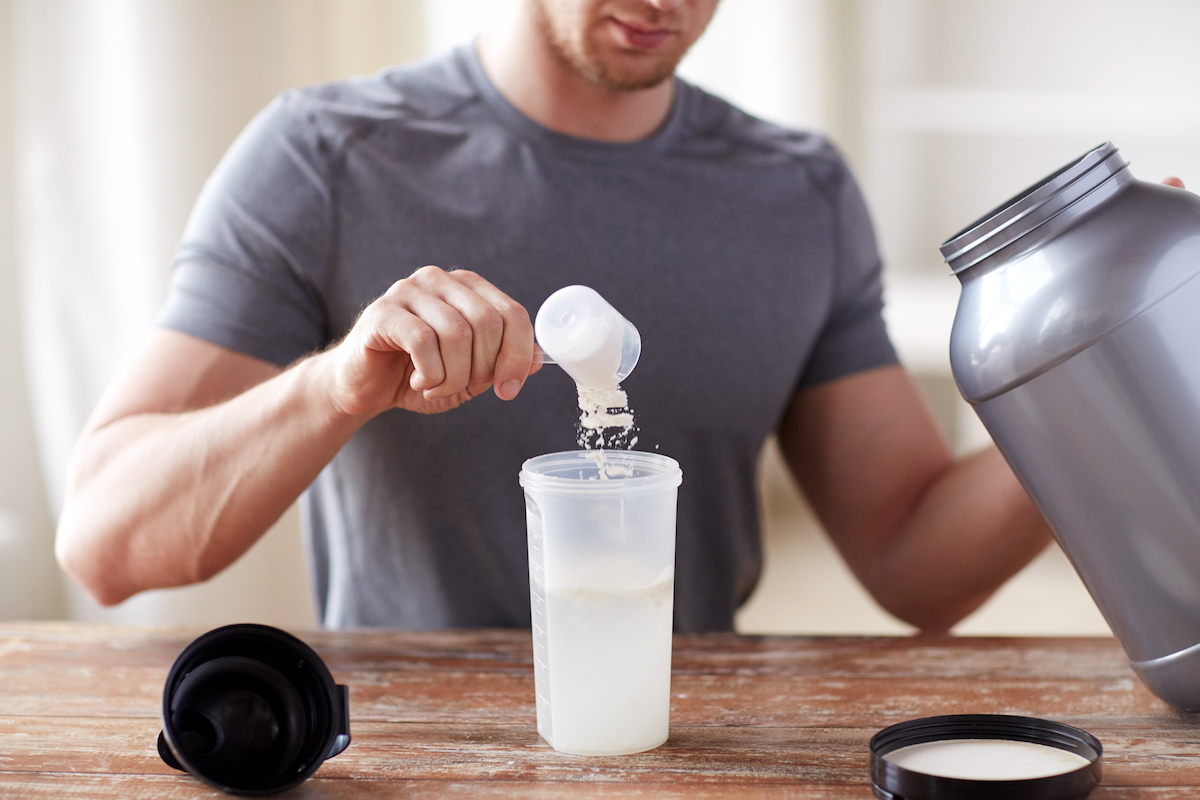Protein is necessary for muscle repair and growth. It keeps you feeling full longer, helps build a solid immune system, and many people use it religiously as a part of their fitness routine. Whey protein is a popular shake ingredient, but are there really benefits to using it?
Many avid gym-goers and athletes consume protein supplements in the form of shakes in order to get the recommended amounts in their diets. Research suggests that people who routinely strength train may need double the RDA, the estimated amount of a nutrient a person needs to avoid a deficiency, or 0.72 grams per pound (1.6 g/kg) in order to support muscle recovery and growth.
Whey protein is a milk protein absorbs quickly by the body, making it useful before or after your workout. Essentially, whey is the liquid leftovers that come from the cheese-making process which is then dried into powder form to use in shakes or when cooking. It’s cheap, easy to find, and can make a real difference in your performance and recovery.

There are three primary types of whey protein; whey protein concentrate (WPC), whey protein isolate (WPI), and whey protein hydrolysate (WPH). WPC contains low levels of fat and carbohydrates. WPIs are further processed to remove all the fat and lactose and is usually at least 90 percent protein. WPH is considered to be the “predigested” form of whey protein because it’s already gone through partial hydrolysis. WPH doesn’t require as much digestion as the other two forms of whey protein and is used in infant formula because of these properties.
There has been a lot of research into when is the best time to consume protein for maximum effectiveness. Taken within 30 minutes of your workout, which is commonly known as the “anabolic window,” has widely been accepted as the ideal time to add in whey protein as it’s the time when your muscles are the most willing to absorb it.
A study published in the International Journal of Sport Nutrition and Exercise Metabolism concluded that “whey protein supplementation during resistance training offers some benefit compared to resistance training alone.” In addition, “males who supplemented with whey protein had a greater relative gain in lean tissue mass.”
But not all protein powders are created equal. Some have additional additives or have a high carb count, making them less than ideal for someone who wants to lose weight. When choosing a protein powder, make sure you look at the ingredient label to see what else has been added. Also, look for a powder that contains at least 20 grams of protein per serving. Finally, choose a product that’s been third-party tested for quality by organizations like NSF Certified for Sport or Informed Choice, so you know what’s on the label is what you’re actually getting.

Protein powder like the Cellucor COR-Performance Powder is formulated with Whey Protein Isolate to maximize muscle recovery, retention, and growth. It’s gluten free, low fat, and comes in seriously delicious flavors like Cinnamon Swirl, Molten Chocolate, and Peanut Butter Marshmallow. Plus, it packs 24 grams of protein per serving and is excellent for baking.
If you’re looking for something completely additive-free, give Naked Whey a shot. It contains whey protein only from grass-fed cows, is low in carbohydrates and fat, and has zero artificial sweeteners or colors.
If you’ve tried whey protein in the past and it’s upset your stomach, you may need to consider a powder that is easy to digest. Dymatize ISO 100 Whey Protein Powder is lactose-free and 91% of calories are from protein. It uses hydrolyzed isolate protein which is supposed to help with digestion and is less than a gram of sugar and fat.
The benefits of adding whey protein to your diet are pretty clear. Not only does it aid in muscle recovery and weight loss, it’s been shown to lower cholesterol, improve the immune response in children with asthma, and has been shown to significantly reduce blood pressure in patients with hypertension (their risk of developing heart disease or stroke was also lower).
Given the relatively minimal cons reported by some people who’ve tried it, it makes sense to add it to your regimen – whether you’re bulking up at the gym or sticking to a running routine.
BlissMark provides information regarding health, wellness, and beauty. The information within this article is not intended to be medical advice. Before starting any diet or exercise routine, consult your physician. If you don’t have a primary care physician, the United States Health & Human Services department has a free online tool that can help you locate a clinic in your area. We are not medical professionals, have not verified or vetted any programs, and in no way intend our content to be anything more than informative and inspiring.



